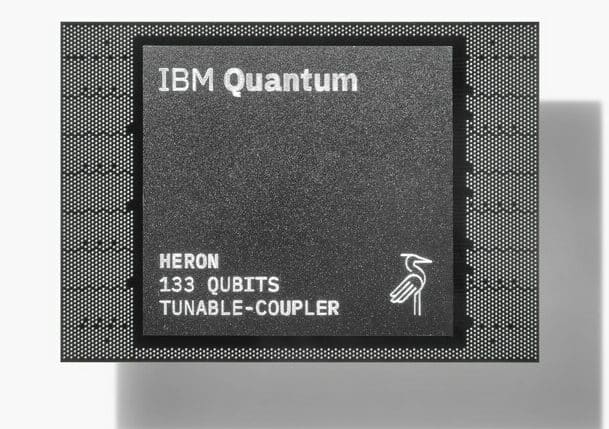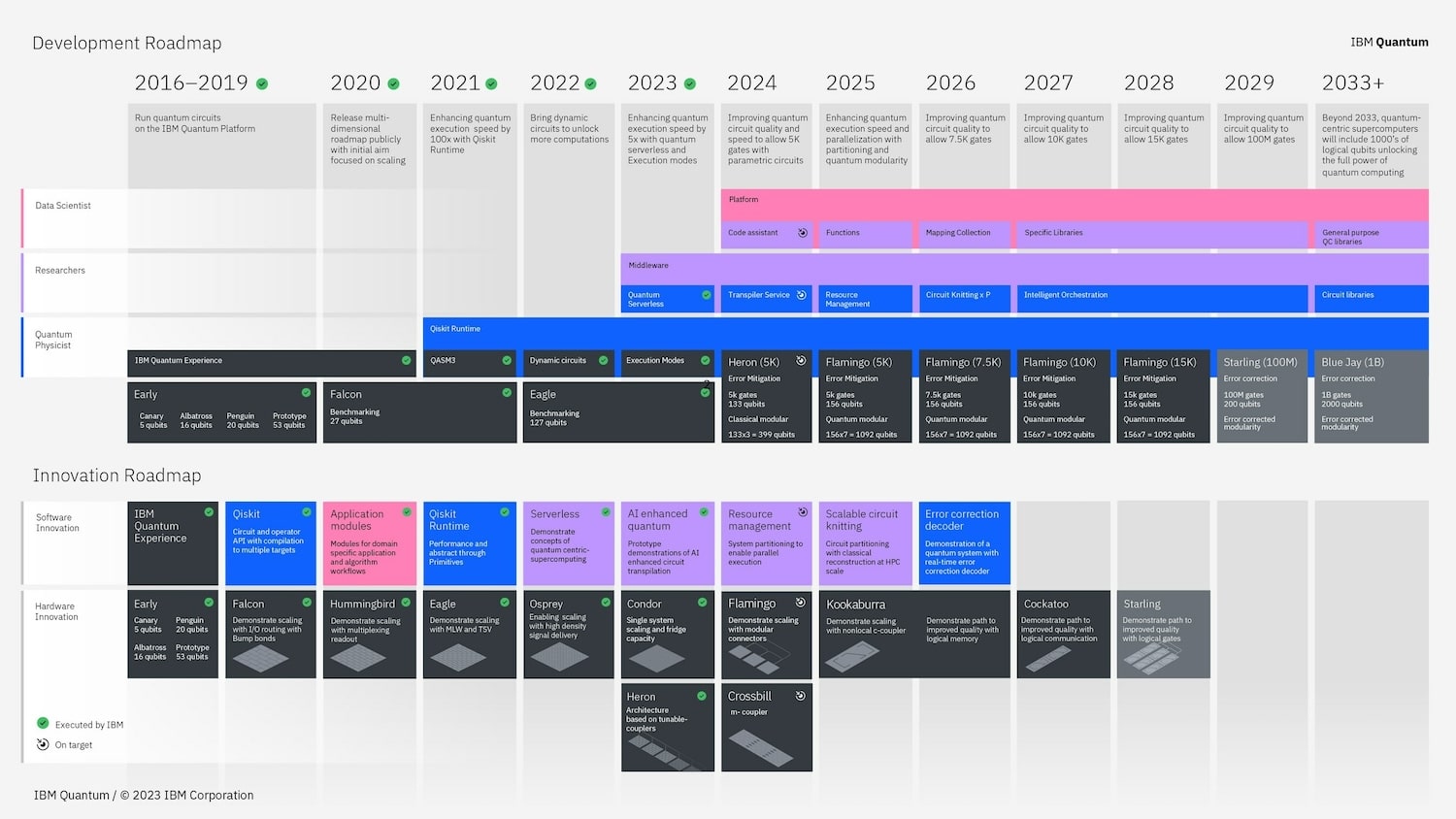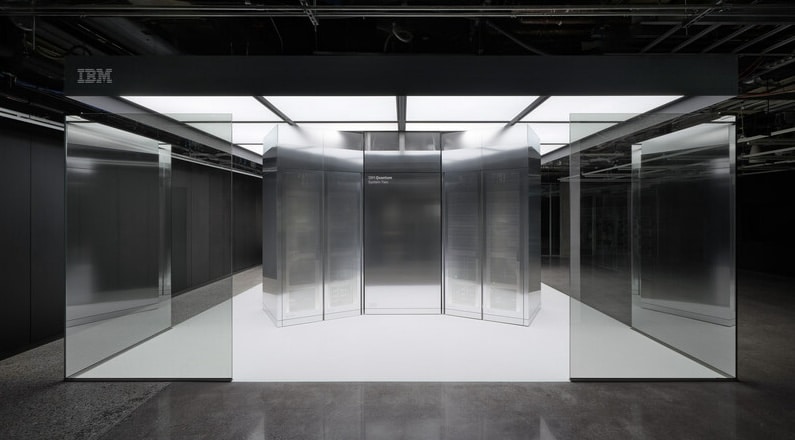At the IBM Quantum Summit, IBM made some groundbreaking announcements. First up, the ‘IBM Quantum Heron’ — a new entrant in their utility-scale quantum processors. This beast, engineered over four years, is setting records for IBM with its extreme performance metrics and low error rates.
At the IBM Quantum Summit, IBM made some groundbreaking announcements. First up, the ‘IBM Quantum Heron‘ — a new entrant in their utility-scale quantum processors. This beast, engineered over four years, is setting records for IBM with its extreme performance metrics and low error rates.

IBM also introduced the IBM Quantum System Two, its first modular quantum computer and a key piece in its quantum-centric supercomputing strategy. The first of these systems is already up and running in Yorktown Heights, New York, packed with three Heron processors and cutting-edge control electronics.
IBM Quantum Roadmap
This launch is just the beginning. IBM’s now extending its Quantum Development Roadmap to 2033, aiming to massively improve gate operation quality. This step is crucial for running larger quantum circuits and unlocking quantum computing’s full potential on a grand scale.

IBM Quantum Development & Innovation Roadmaps
Earlier this year, IBM introduced the 127-qubit ‘IBM Quantum Eagle’ processor designed to tackle complex problems in chemistry, physics, and materials science that are too tough for classical quantum mechanics simulations.
Now, the new 133-qubit IBM Quantum Heron processor is joining the fray. Available via the cloud, it’s setting new performance standards with error rates five times lower than the IBM Eagle. Over the next year, more Heron processors will beef up IBM’s fleet.
IBM Quantum System Two
The IBM Quantum System Two isn’t just hardware; it’s the foundation of a new quantum computing system architecture. It blends scalable cryogenic infrastructure with modular qubit control electronics, all part of IBM’s vision for quantum-centric supercomputing. This setup integrates quantum and classical computing, paving the way for more complex quantum-classical workflows.

IBM Quantum System Two
IBM’s ten-year roadmap includes plans for future processors in the System Two, each improving operation quality and handling more complex tasks.
Software’s getting an upgrade, too. IBM’s rolling out a new generation of its software stack, with Qiskit 1.0 at its core, focusing on stability and speed. Plus, they’re launching Qiskit Patterns to help quantum developers easily create code, optimizing classical problems into quantum circuits.
watsonx Tapped For Quantum Code Programming
And there’s more – IBM is tapping into generative AI for quantum code programming with watsonx. This integration aims to simplify quantum code development using the IBM Granite model series.
With these advancements in hardware and software, IBM is making quantum computing more accessible and reliable, allowing users to tackle increasingly complex problems with their 100+ qubit systems.
Engage with StorageReview
Newsletter | YouTube | Podcast iTunes/Spotify | Instagram | Twitter | TikTok | RSS Feed
